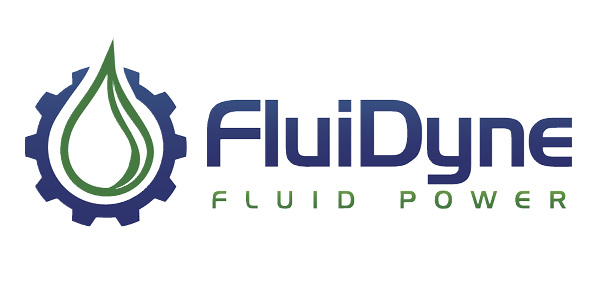Ask the Expert with FluiDyne

Q: Can the orientation of porting be changed in the field on vane pumps?
Yes! Porting can be changed on a wide variety of vane pumps fairly easily. The vane units use a cartridge kit that is assembled then installed into the unit. So, the inlet and outlet body do not have to be fully disassembled to change porting. To start you will need to loosen the bolts holding the unit together. Before you loosen the last bolt use one hand to lightly push down on the cover holding it in place. You will now want to loosen the last bolt. You can either fully remove the bolts or slide them back far enough to clear where the bodies meet. You need to do this so they do not interfere when turning the housing. This will give you leverage if the housing is stubborn to move. Once the porting has been changed the bolts can be reinstalled and torque down. For proper torque specs check with the pumps manufacturer or distributor for that specific unit.
Q: How can I change rotation on my low speed, high torque motor?
Rotation can be changed on the majority of hydraulic motors by swapping the inlet and outlet ports. If your inlet port for the motor is the ‘A’ port and the shaft is spinning right handed (viewed from the shaft end of course) then you will want to swap the hoses so the inlet port is now the ‘B’ port. Now your shaft rotation is left handed. If you are not sure the motor is bi-rotational then please check with us. We will be happy to help you identify your motor with step-by-step directions.
Q: If my coil fails, do I need to replace the entire valve?
No! D05 and D03 directional valves today have a separate core tube and coil that mount to the valve body. There is a knurled knob on the end of the valve that is screwed onto the core tube. By removing the knurled knob the coil can be removed and replaced easily. On a wired housing electrical box, you will need to remove the cover plate on the valve and unscrew the wires from the terminal connection. Feed the wires through the conduit opening. When installing the new coils, you would feed it through the conduit opening and reattach to the terminal connections. Screw the knurled knob on the end of the core tube.
Q: Can I change the pump controls on my piston pump? If so, how?
Pump controls are manufacturer specific but yes they can be changed even in the field. Because the pumps controls are generally not manufactured into the pump housing, they are mounted to the unit during assembly. This means they can be unbolted and changed with another control that has a different function. This is relatively easy to do and can be done at any location.
Q: How do you adjust a pressure control?
Before adjusting the pressure control you will want to be sure you are adjusting the right control. If the assembly has more than one pressure adjustment, please check with the manufacturer or any hydraulic company familiar with the pump. They will be able to tell you which control to adjust and what the maximum adjustment is for the pump pressure. Once it has been determined which adjustment is used, it then can be adjusted by loosening any lock nut or locking wire holding the screw in place. Then with the system running, rotate the adjustment to the right to increase pump pressure or rotate the adjustment to the left to reduce pump pressure. While adjusting your control you may see oil leaking around the adjustment screw. It is normal for some controls that have an external locking nut with either a Teflon or o-ring seal. When you have the pressure adjusted to the proper setting you can tighten any lock nuts.
Q: Can I change rotation on my V10/20 pump onsite; if so is it easy to do?
Yes! Changing rotation on a V10 or V20 style unit is easy to do with minimal tools needed. First thing you should do is make sure you have a clean area where you can keep everything together when the unit is taken apart. Remove the four bolts holding the unit together and then remove the cover. Next you will take off the spring and pressure plate which will leave you with the cartridge kit. On the V10 or V20 style vane pumps the only item you have to flip is the cam ring. Flip it over and mount it back onto the front body. You will now want to reinstall the pressure plate and spring. Use a little grease to hold the cover o-ring in place. Set the cover back onto the unit and push it down by hand. It is important to make sure the o-ring is seated against the cam ring. Reinstall the four bolts hand tight. Finally, you can torque down the bolts to factory spec of 35-45 lb.ft. for V10 and 75-85 lb.ft. for V20 units.
Please call (586) 296-7200 if you have any questions or need help with any changes you need to make in the field! Our technical support is the best in the industry!



What causes the oil temp in my hydraulic tank to overheat every hour? It goes up to 62 c then shuts off on over temp .
I am looking for some info on reservior sizing for an auxillary hydraulic system that will be on a rear 3pt hitch frame to run front end loader mounted accessories on a compact tractor . I know that I will be using a pto pump that flows 12.6 gpm at 1800 psi. I am trying to figure out what size of reservior that I would need to be using .